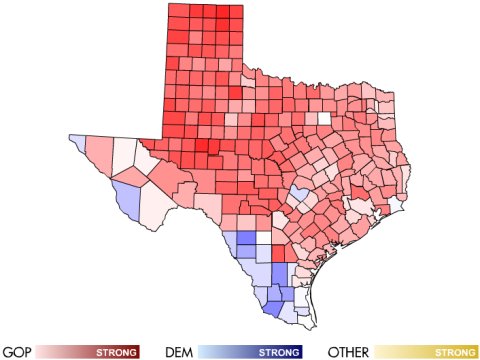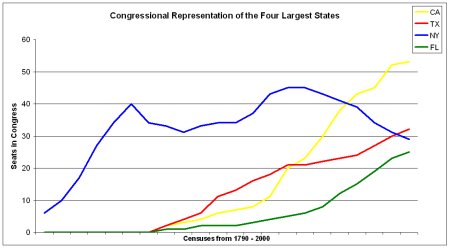In an interview with Politico‘s Ben Smith published this morning, Obama field director Steve Hildebrand vowed that their team would be spending a lot of time and money in Bush country this Fall. He named 14 red states, some of which were close in 2004 and some of which Kerry didn’t even consider, and he also vowed to give resources to down-ticket races in ruby red states like Bush’s Texas and Cheney‘s Wyoming.
The move is genius.
A big reason why Kerry lost is because he had tunnel vision and couldn’t see beyond a handful of competitive swing states in the Midwest, a failed strategy for several reasons: First, it oversaturates the target voters; secondly, it discourages friendly voters in unfriendly states (in this case Dems in red states) from getting involved; and thirdly and most importantly, it sends a very poor signal to the electorate in neglected states (in Kerry’s case the Heartland and South).
When a candidate puts all his chips on one hand, half of the time he’s going to end up felted.
Of course, resources are always an issue and something Kerry didn’t have in abundance. But as Smith notes in the Politico article, “Hilebrand’s plans underscore the unusual scope and ambition of Obama’s campaign, which can relatively cheaply extend its massive volunteer and technological resources into states which won’t necessarily produce electoral votes.”
And the ROI could be substantial. As Hokie fan Daivd “Mudcat” Saunders points out this week in the brilliant Weekly Standard cover piece “When Bubba Meets Obama,” when Dems pick off a Republican voter, it’s a “twofer” — one for Obama, and one less for McCain. Instead, Mudcat says, Dems often fall into the habit of “hunting squirrels they’ve already killed” (more on this story later).
Mudcat will probably be happy to know that the campaign has promised to contest 14 states that Bush carried in ’04 — “The closest four, Iowa, New Mexico, Ohio, Nevada, [Hildebrand] said, would see ‘a ton of attention.'” The campaign also plans to fight for Colorado, Florida, Missouri, Virginia, North Carolina, Montana, North Dakota, Indiana, Georgia and Alaska. Hildebrand also said they’d be spending a lot of time in New Hampshire, and in my personal favorite: Nebraska’s 2nd District.
I think it’s a smart move, and one that will certainly give The Electoral Map a lot to talk about in upcoming months.
















